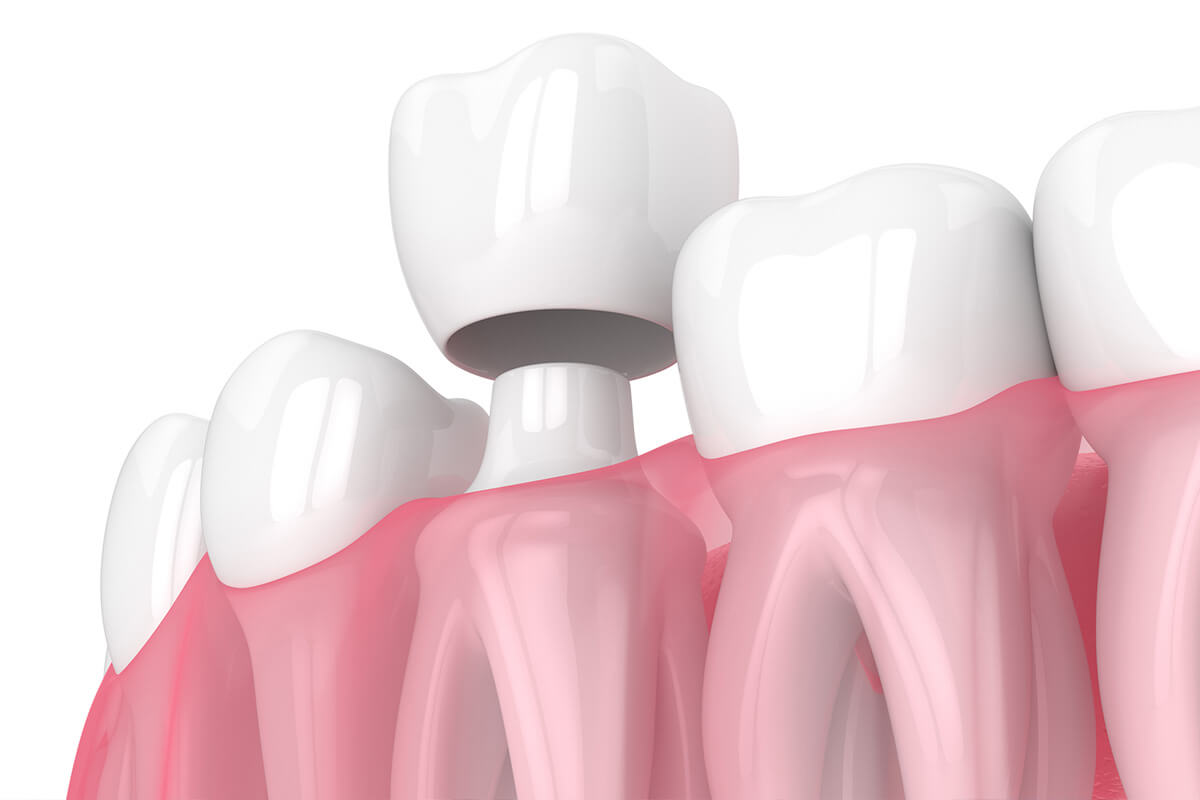Teeth that have significant decay are often treated with a dental crown. Each year, millions of dental crowns save severely damaged teeth. A dental crown fits completely over your natural tooth. But, patients must have approximately ¼ of the natural tooth remaining to be eligible for a dental crown. If the tooth doesn’t have at least 2 millimeters of healthy structure remaining, you will likely need to have the tooth extracted and replaced with a dental implant or dental bridge.
What Causes Tooth Decay?
Tooth decay (cavities) develops in response to bacteria in the mouth. Bacteria in the mouth is normal and universal, affecting all people. However, when that bacteria mixes with saliva, foods, and beverages it forms an acid, which eats at the enamel of the teeth, and forms plaque.
Untreated plaque leads to cavities. Studies show that by age 30 a whopping 80% of people have at least one cavity. The leading causes of plaque buildup on the teeth include:
- Lack of regular dental care
- Poor oral hygiene habits (failing to brush 2x/daily and floss daily)
- A diet that includes lots of sugary, starchy foods and beverages
- Dry mouth
- Bruxism (teeth grinding and clenching)
- Genetics (deep crevices in molars, naturally weak enamel)
- Receding gums
5 Stages of Tooth Decay
If left untreated, tooth decay will progress through five stages:
- Demineralization
During this stage, the minerals in the tooth enamel are beginning to break down. You may notice white spots on the teeth. Your dentist may be able to treat these cavities with fillings.
- Decaying enamel
As the enamel decays, you may be able to see the cavities, which look like small holes. The small, previously white spots may begin to turn brown. Your dentist may be able to treat teeth in this stage with fillings. If the cavities are large, however, you may need a crown.
- Decaying dentin
Dentin lies beneath the enamel of the teeth and is much softer and, therefore, more vulnerable than the enamel. Once decay reaches the dentin you may experience tooth sensitivity or discoloration. You will likely need a crown at this stage.
- Damage to the tooth pulp
Left untreated, decay that reaches the tooth pulp generally produces very painful symptoms. This is because the pulp contains blood vessels and nerves. Cavities that reach the pulp require a root canal and a dental crown.
- Dental abscess
A dental abscess is an oral health emergency, and you’ll need immediate treatment. A dental abscess results from a cavity that has developed an infection. It leads to the development of a pus-filled pocket, which must be treated immediately, as the infection can potentially enter your bloodstream.
Frequently Asked Questions about Dental Crowns
How long will a crown last?
Crowns today are incredibly durable. With regular dental care and good oral hygiene habits, your dental crown is expected to last at least many years.
Will I need anesthesia to get a crown?
A local anesthesia will be administered to numb the area surrounding the tooth. If you experience dental fear or anxiety, talk with Dr. Jamrozek about whether nitrous oxide, commonly known as laughing gas, may be right for you. Nitrous oxide has been used for hundreds of years in medical and dental procedures. The effects of this inhaled gas wear off virtually immediately.
See Your Dentist Regularly To Prevent Tooth Decay
Dental crowns prevent the loss of even severely damaged teeth. However, it’s always better to prevent damage from tooth decay by practicing great oral hygiene and seeing the dentist twice a year. If it’s been six months or longer since your last dental exam, schedule an appointment with Dr. Jamrozek in West Milford, NJ. Call 973-728-3779 or message us.
